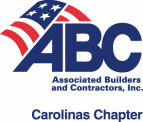Legislation revising North Carolina’s mechanic’s lien law was filed in both the House and Senate sides of the N.C. General Assembly yesterday. Text of the legislation can be found here.While not the ambitious rewrite that members of the construction bar and real property bar had envisioned when the process of revising the statutory scheme began a few years ago, the pending legislation would make several important changes to existing mechanic’s lien law, while leaving a couple other significant issues for future legislative effort.
Click “Continue reading” below for my thoughts on the five most significant proposed changes embodied by the current revisions — as well as my thoughts on the top two “non-changes” to existing law.
If the current legislation were to become law, I think the five most significant changes would be as follows:
- In an effort to extend the protections of the lien law to manufacturers of prefabricated materials, the legislation would revise the definition of “Improve” in N.C. Gen. Stat. § 44A-7 to include the “off-site design, fabrication, and related labor and materials in connection with noncommodity prefabricated materials, products systems, or equipment customized for the use and benefit of improving particular real property, whether delivered to the real property or not[.]” (Emphasis supplied).
- In an effort to clarify the rights of lien claimants when a party higher up in the contractual chain petitions for bankruptcy protection, changes to N.C. Gen. Stat. §44A-18(f) would establish that a claim of lien upon funds “arises, attaches and is effective immediately upon the first furnishing of labor, materials or rental equipment at the site of the improvement.” This language would effectively provide subcontractors and suppliers with a right to file a notice of claim of lien upon funds despite the “automatic stay” provisions of the federal bankruptcy code. While the U.S. Bankruptcy Court for the Eastern District of North Carolina has recently backed off its 2009 bar on filing such notices once a party up-the-chain seeks bankruptcy protection (see my previous blog post on the subject), there’s been sufficient judicial volatility on this issue to justify keeping the legislative “fix” in the statutory revision.
- In an effort to reduce the confusion that may arise from the multitude of lien waiver forms that currently exist in the marketplace, standardized lien waiver forms have been added to N.C. Gen. Stat. § 44A-12.
- In an effort to deter fraud in the execution of lien waivers, and to give some bite to an existing law considered toothless by many in the construction industry, a revision to N.C. Gen. Stat. § 44A-24 would make false statements made by persons receiving payment on construction projects not only a criminal misdemeanor, but also an unfair and deceptive trade practice under Chapter 75 of the General Statutes, opening the door to civil actions by parties damaged by such false statements for recovery of treble damages and attorneys’ fees. Such false statements would also give rise to disciplinary action under Chapter 87 of the General Statutes.
- In an effort to mitigate the “pay twice” liability often confronted by general contractors on public bonded work, changes to § 44A-27 would require: (a) general contractors on public bonded work to provide a “Project Statement” to each first tier sub, summarizing the basics of the project and providing the contact information for an authorized agent of the payment bond surety; (b) first-tier subs on public bonded work to float the “Project Statement” down to their second-tier subs; and (c) second-tier and lower subs on public bonded work to submit a “Notice of Public Subcontract” to general contractors, summarizing the work to be performed on the project by that entity. These changes would place a premium on submitting the “Notice of Public Subcontract” early on in a lower-tier sub’s performance, since the proposed revisions would limit lower-tier subs’ payment bond claims to the value of work performed within 60 days of providing the Notice.
There are also two things the lien law revisions DON’T accomplish that you should be aware of:
- They DON’T address the “hidden lien” aspect of our lien law, about which the title insurance industry has long complained. Since lien rights arise from the date of first performance, but don’t become a part of the public record until claims of lien are filed, there’s a period of time during which liens are “hidden” from lenders and others who do business with title insurance companies. However, the legislative study commission that reviewed the initial (and more ambitious) version of the revisions determined that additional study of the “hidden lien” issue was in order prior to recommending legislative action on that issue.
- They DON’T address the issues raised by last year’s Pete Wall Plumbing decision, which effectively decimated mechanic’s liens rights against leasehold interests. Like the “hidden lien” issue, the liens-against-leaseholds issue requires further study before immediate legislative action.
The General Assembly’s 2012 “short session” is scheduled to close around the Fourth of July, so legislative action on these revisions is likely to be fast and furious over the next four to five weeks. I’ll do my best to keep you posted on developments. In the interim, feel free to submit your thoughts and concerns about the current legislation in a comment.







Pingback: Title Insurers Seek Profound, Immediate Changes to N.C. Mechanic’s Lien Law | N.C. Construction Law, Policy & News
Pingback: Latest on Lien and Bond Bills Pending in the General Assembly | N.C. Construction Law, Policy & News